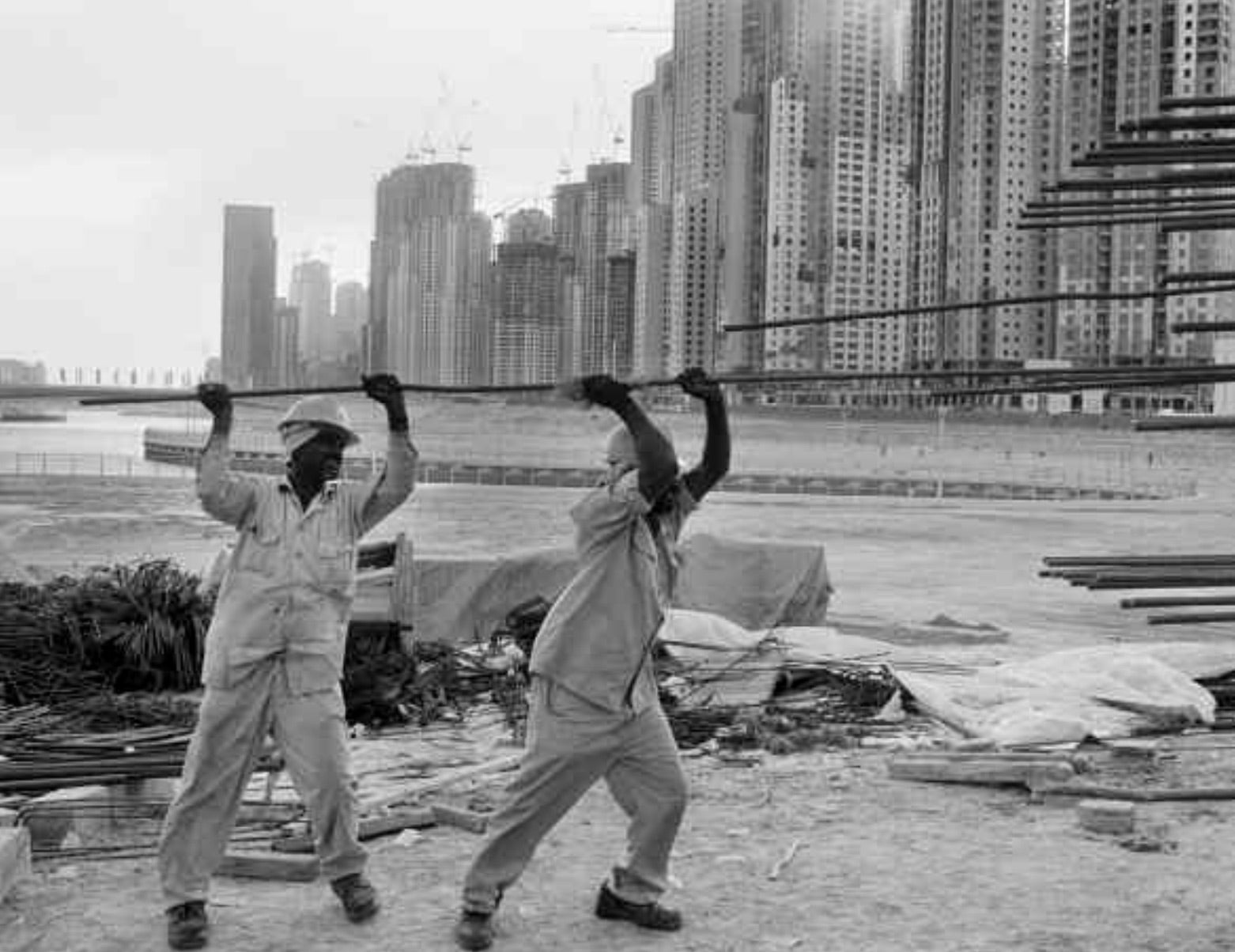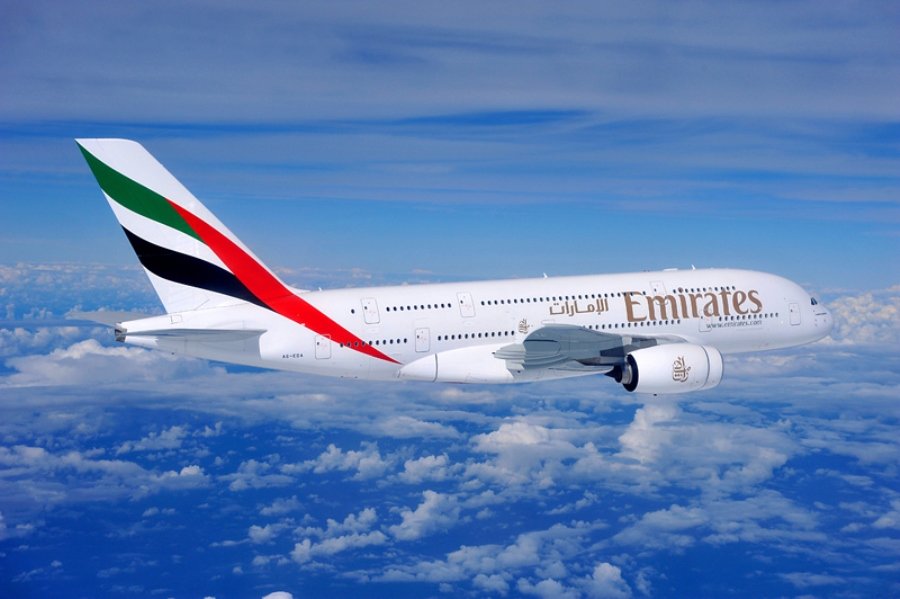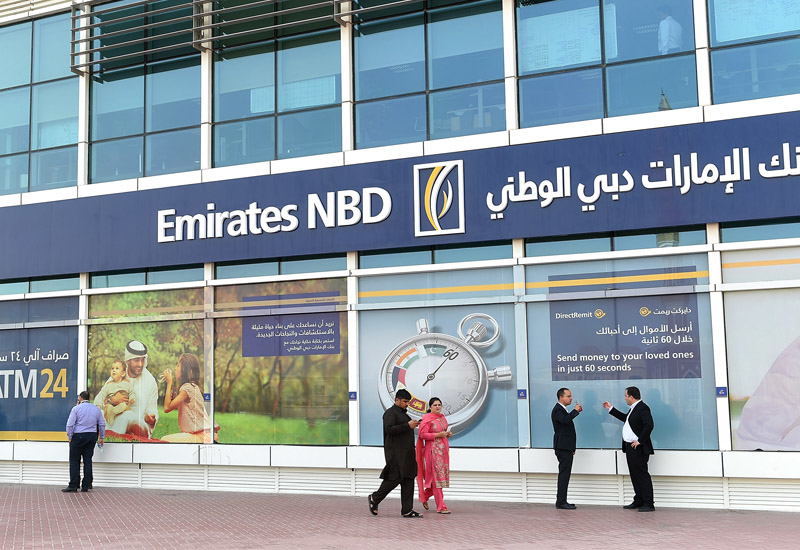The United Arab Emirates is a country that is made up of seven emirates. Those are Abu Dhabi, Dubai, Sharjah, Ajman, Fujairah, Ras al-Khaimah, and Umm al-Qaiwain. While the country as a whole has a prime minister and federal president, each emirate has its own ruler that oversees the local governments.
The UAE was established in 1971, and since that time, it has seen great population growth. Its largest city is Dubai, which has reached the one million resident milestone with a population of 1.1 million. This is the only city with a population exceeding one million. However, there are other cities within the UAE that have high population counts. The second most populous city, Abu Dhabi, has over 600,000 residents. There are four additional cities with populations that have surpassed 100,000.
Seven cities have populations that are between 10,000 and 100,000, while remaining cities and towns make up the remainder of the population. Dubai is the most populous and the largest emirate in the UAE with approximately 2,502,715 people. Notably, it is the most progressive emirate among the seven emirates. Dubai is classified as an alpha city due to its strong economy.
Despite being a desert, the country has managed to utilize its resources and according to the 2015 statistics, it has an annual GDP of 105.6 billion USD. Unlike its neighboring emirates such as Abu Dhabi, the oil reserves of Dubai have been exhausted; oil contributes only 2 % of the total GDP of this emirate. Although it started as a port, Dubai has developed into a luxurious emirate that is home to the world's tallest building. The United Arab Emirates is a federation of seven emirates, with Abu Dhabi as the capital hosting the seat of the President of the UAE and the federal cabinet.
Dubai is perhaps the most well known of the emirates, with the largest population and has recently attracted world attention through many innovative large construction projects and sports events. The UAE possesses one of the most developed economies in the Middle East, built on its significant oil reserves, most of which are contained in Abu Dhabi. The two major airlines in the UAE are Etihad Airways and Emirates Airline, expanding rapidly utilising the 'sixth freedom' hub model to develop global networks.
Etihad is the government owned national airline of the UAE operating an extensive network from its hub and base at Abu Dhabi International Airport. Government owned Emirates Airline is the largest major carrier in the Middle East and is the national airline of Dubai. The Dubai government also owns flydubai, an LCC established in 2009.
Air Arabia, an LCC based in the emirate of Sharjah, is pursuing cross-border JVs to establish bases in Morocco, Egypt and Jordan. Air Arabia Abu Dhabi is a joint venture between Air Arabia and Etihad Airways, and was approved as a national carrier airline for the UAE in Jan-2020. The UAE's monetary policy stresses stability and predictability, as the Central Bank of the UAE keeps a peg to the US Dollar and moves interest rates close to the Federal Funds Rate. This policy makes sense in the current situation of global and regional economic and geopolitical uncertainty. In the mid- to long term, however, the peg will become less important, as the UAE transitions to a knowledge-based economy – and becomes yet more independent from the oil and gas sector . As impressive as economic growth has been in the UAE, the total population has increased from just around 550,000 in 1975 to close to 10 million in 2018.
This growth is mainly due to the influx of foreign workers into the country, making the national population a minority. The UAE features a unique labour market system, in which residence in the UAE is conditional on stringent visa rules. This system is a major advantage in terms of macroeconomic stability, as labour supply adjusts quickly to demand throughout economic business cycles. The UAE has developed from a juxtaposition of Bedouin tribes to one of the world's most wealthy states in only about 50 years. Between 2000 and 2018, average real gross domestic product growth was at close to 4%. It is the second largest economy in the GCC , with a nominal gross domestic product of US$414.2 billion, and a real GDP of 392.8 billion constant 2010 USD in 2018.
Since its independence in 1971, the UAE's economy has grown by nearly 231 times to 1.45 trillion AED in 2013. The non-oil trade has grown to 1.2 trillion AED, a growth by around 28 times from 1981 to 2012. Nowadays the UAE is one of the world's richest countries, with GDP per capita almost 80% higher than OECD average. Ras al-Khaimah is situated to the northern part of the UAE, bordering part of Oman's territory, the Musandam.
The population of this emirate is 205,000 people, and the Emirati citizens are the largest group. Ras al-Khaimah does not have any oil, and it has, therefore, focused on advancing its industrial sector. The primary economic areas of Khaimah include real estate, tourism, building materials, service sector, and agriculture. The most recognized types of attraction in this emirate include shopping, nature, parks, water, and amusement parks. The capital city of this emirate is also referred to as Ras al-Khaimah and it is a home to most of the citizens of Ras al-Khaimah emirate.
The states gained autonomy following World War II (1939–45), when the trucial states of Bahrain and Qatar declared independent statehood. The rest were formally united in 1971, with the city of Abu Dhabi serving as the capital. Human occupation has been traced back to the emergence of anatomically modern humans from Africa some 124,000 BCE through finds at the Faya-2 site in Mleiha, Sharjah. Burial sites dating back to the Neolithic Age and the Bronze Age include the oldest known such inland site at Jebel Buhais. The ensuing Wadi Suq period and three Iron Ages saw the emergence of nomadism as well as the development of water management and irrigation systems supporting human settlement in both the coast and interior. The Islamic age of the UAE dates back to the expulsion of the Sasanians and the subsequent Battle of Dibba.
The UAE' history of trade led to the emergence of Julfar, in the present-day emirate of Ras Al Khaimah, as a regional trading and maritime hub in the area. The maritime dominance of the Persian Gulf by Emirati traders led to conflicts with European powers, including the Portuguese Empire and the British Empire. Islam is the official religion and Arabic is the official language.
The United Arab Emirates' oil and natural gas reserves are the world's sixth and seventh-largest, respectively. Zayed bin Sultan Al Nahyan, ruler of Abu Dhabi and the country's first president, oversaw the development of the Emirates by investing oil revenues into healthcare, education, and infrastructure. The United Arab Emirates has the most diversified economy among the members of the Gulf Cooperation Council.
In the 21st century, the country has become less reliant on oil and gas, and is economically focusing on tourism and business. The government does not levy income tax, although there is a corporate tax in place and a 5% value-added tax was established in 2018. The fact that the traditional tribal system of government each emirate was based on similar political principles facilitated the establishment of the UAE. Hereditary dynastic family rule still operates in each emirate as a local government system under the umbrella of the federal system.
Members of the ruling families occupy the most important positions in their political administrations. While the political system continues to retain some of its traditional values at formal and informal levels, it has been able to keep pace with economic and social change. The sheikhs are highly regarded for performing the dual roles of modernizers and guardians of the cultural heritage.
They still have traditional majlis where citizens have access to their leaders. Before 1960, the only settlements were small towns and villages. Towns have been transformed from mud-walled communities into commercial capitals integrated in the global economy. Because of the small population and harsh desert interior, 80 percent of the population lives in the coastal capital cities, leading social scientists to describe them as city-states. The population of the UAE is between 2.8 million and 3 million. About 85 percent of them live in cities that straddle the country's Arabian/Persian Gulf coastline.
UAE cities tend to be ethnically heterogeneous and male, while there are more women and UAE nationals in rural areas. The 3 largest emirates—Abu Dhabi, Dubai, and Sharjah—collectively govern 84.3 percent of the population. Close to 80 percent of the population is comprised of expatriate nationals and nearly 63 percent of the population is male. South Asians, mainly Indians and Pakistanis, make up 50 percent of the population.
The next 3 largest expatriate ethnic groups are Iranians (2.5 percent), Arabs from other parts of the Middle East , and Westerners . UAE's economy has grown steadily in the last 50 years since its independence. The economic growth is attributed to oil the industry, foreign investments and economic diversification.
In 2018, the oil and gas sector contributed 26 per cent to the overall GDP and the rest was from wholesale and retail trade, financial and insurance, construction and building, tourism among others. Abu Dhabi, the capital, is the centre of industry, commerce, and major cultures, which accounts for nearly two-thirds of the UAE's economy. Abu Dhabi is the largest emirate, accounting for 87% of the total land area of the UAE. Despite its size, only around 30% of Abu Dhabi is inhabited. There are 200 islands that belong to the emirate, however they are small and mostly uninhabited.
It hosts sandy desert patterns that differ from the gravel deserts found in the southern part of the country. Both Abu Dhabi and Dubai have used land reclamation projects with Abu Dhabi filling in low laying salt flats to create Yas Island, Al Reem Island and Lulu Island. Most of Dubai's reclamation projects have been completed in the past fifteen years and include Palm Islands, World Islands, Dubai Marina and Burk Al Arab. Apart from being the capital city, it is also the second largest emirate in the world with an approximate population of 1.6 million people.
Abu Dhabi is classified as one of the wealthiest cities in the world with most of its revenue originating from petroleum products. This emirate accounts for approximately two-thirds of the UAE economy. Unlike Dubai which is more Westernized, Abu Dhabi is more into cultural traditions. Dubai is the second-largest emirate in the UAE, located on the eastern coast of the Arabian Peninsula, in the southwest corner of the Arabian Gulf. It has borders with Abu Dhabi to the south, Sharjah to the northeast and the Sultanate of Oman to the southeast. The emirate was established in 1833 and is currently ruled by H.
H. Sheikh Mohammed bin Rashid Al Maktoum, who is also the vice president and prime minister of the UAE. The UAE leadership has driven forward economic diversification efforts already before the oil price crash in the 1980s, and the UAE is nowadays the most diversified economy in the Middle East and North Africa region. Although the oil and gas sector does still play an important role in the UAE economy, these efforts have paid off in terms of great resilience during periods of oil price fluctuations and economic turbulence. In 2018, the oil and gas sector contributed 26% to overall GDP.
While the government may still adjust the exact arrangement of the VAT, it is not likely that any new taxes will be introduced in the foreseeable future. Additional taxes would destroy one of the UAE's main enticements for businesses to operate in the country and put a heavy burden on the economy. The UAE emits a lot of carbon dioxide per person compared to other countries. The UAE coast stretches for nearly 650 km along the southern shore of the Persian Gulf, briefly interrupted by an isolated outcrop of the Sultanate of Oman. Six of the emirates are situated along the Persian Gulf, and the seventh, Fujairah is on the eastern coast of the peninsula with direct access to the Gulf of Oman.
Most of the coast consists of salt pans that extend 8–10 km inland. The largest natural harbor is at Dubai, although other ports have been dredged at Abu Dhabi, Sharjah, and elsewhere. Numerous islands are found in the Persian Gulf, and the ownership of some of them has been the subject of international disputes with both Iran and Qatar. The smaller islands, as well as many coral reefs and shifting sandbars, are a menace to navigation.
Strong tides and occasional windstorms further complicate ship movements near the shore. The UAE also has a stretch of the Al Bāţinah coast of the Gulf of Oman. The Musandam Peninsula, the very tip of Arabia by the Strait of Hormuz, and Madha are exclaves of Oman separated by the UAE. The Emirate of Abu Dhabi lies on the coast of the Arabian Gulf between the two latitudes 22.5 and 25 north and the two longitudes 51 and 55 east.
It is the largest of the seven Emirates with an area of about 67,340 sq. Km., 86.7% of the total area of the country without the island. The population of the emirate is 1,399,484 according to the 2005 census. Abu Dhabi comprises three major areas; the city of Abu Dhabi, Al Ain region and Al Dhafra region.
The discovery of oil in 1972 and beginning of natural gas drilling in 1990 brought Sharjah new sources of income, allowing the emirate to develop rapidly into the successful cultural and business hub that it is today. However, since Sharjah's oil and gas resources are limited, the economy has been diversified to include manufacturing, health care, environmental protection, tourism, transport and logistics as well. In recent years, the Sharjah government has established two economic free zones and increased investment opportunities in the emirate. The United Arab Emirates share borders with Oman, Saudi Arabia, as well as Qatar. Abu Dhabi is the largest Emirate; the remaining six (Dubai, Sharjah, Ajman, Fujairah, Umm al Qaiwain and Ras al-Khaimah) are known collectively as the Northern States.
Dubai has a 16km deep-water creek, giving it the popular name of 'Pearl of the Gulf'. Sharjah has a deep-water port on the Batinah coast at Khor Fakkan, looking out to the Indian Ocean. Fujairah, one of the three smaller sheikhdoms situated on the Batinah coast, has someagricultural potential, while Ajman and Umm al Qaiwain were once small coastal fishing villages. Despite being the smallest emirate, Ajman is the fourth most populous state in the UAE with about 258,000 people.
The major tourist attractions in this area include cultural destinations, hotels, and shopping malls. The city hosts the Ruler's office, several banks, and approximately fifty local and international retail shops. Ajman was founded in 1803 after Sheik Rashid bin Humaid Al Nuami conquered the coastal settlements. After joining forces, the UAE has grown to become a significant economic center in the Middle East.
This exportation has led to a much-diversified economy making most of the seven emirates such as Dubai to transform into global hubs for retail, finance, and tourism. Annually, each emirate allocates a certain percentage of their revenue to the central budget of the UAE. The seven emirates have developed differently over the last decade as described below. Abu Dhabi is the federal capital of the United Arab Emirates and is also the largest of the seven emirates, covering 87% of the whole country. The emirate sits on the Arabian Gulf with 700 km of coastline and is bordered by the Sultanate of Oman to the east, the Kingdom of Saudi Arabia to the south and the emirate of Dubai to the northeast. H. Sheikh Khalifa bin Zayed Al Nahyan is the ruler of Abu Dhabi and the president of the UAE.


























No comments:
Post a Comment
Note: Only a member of this blog may post a comment.